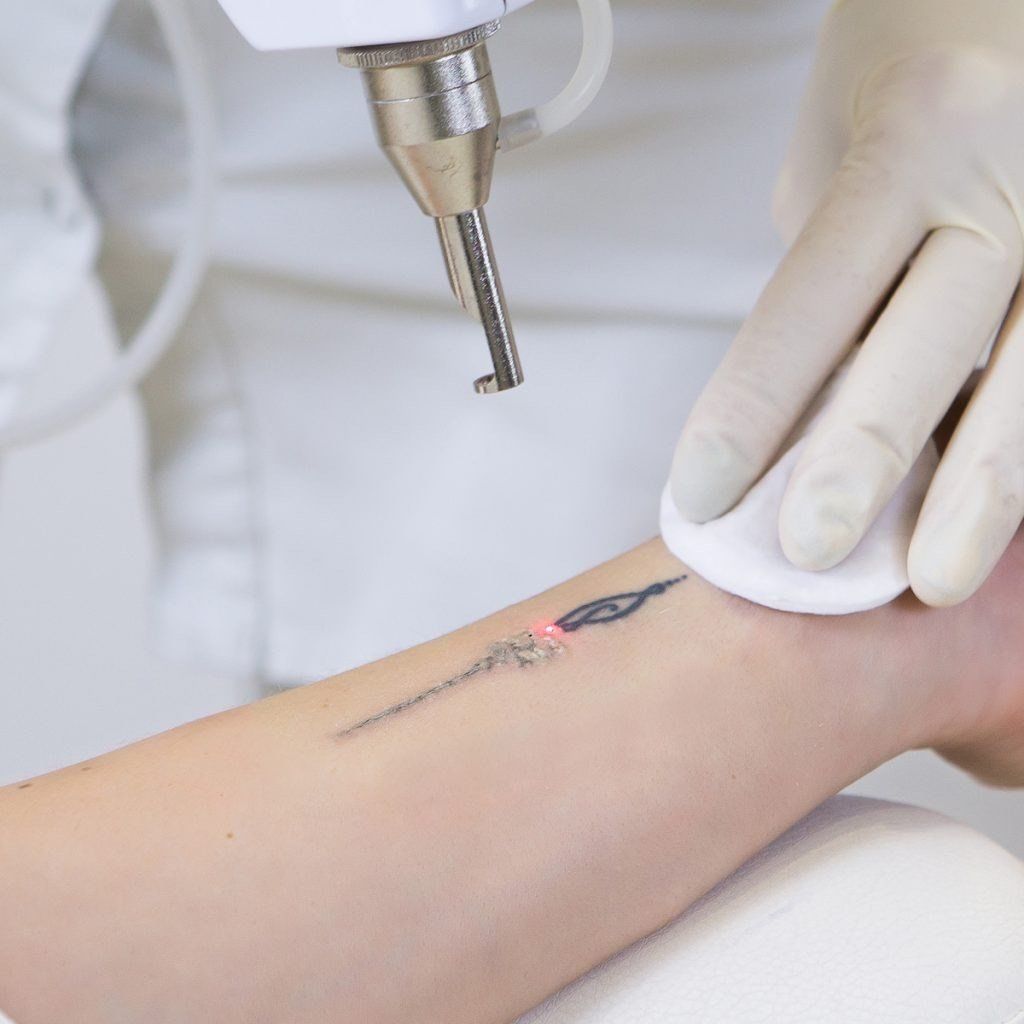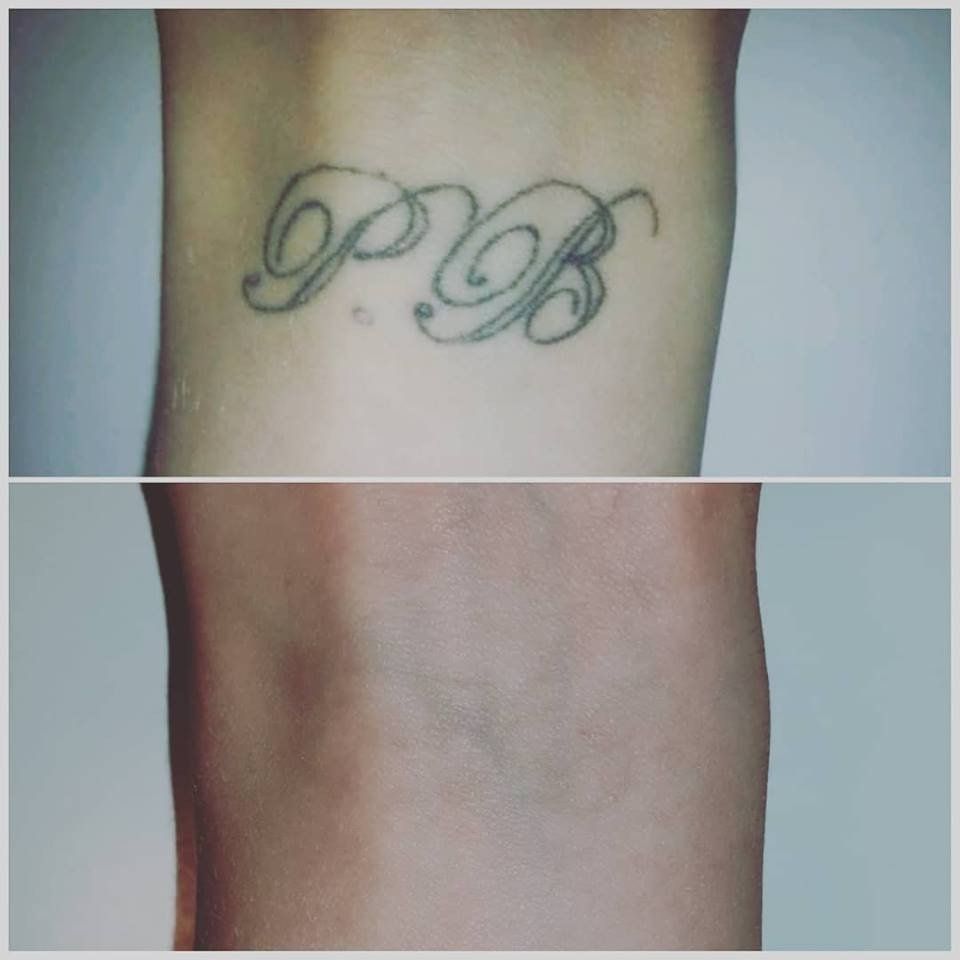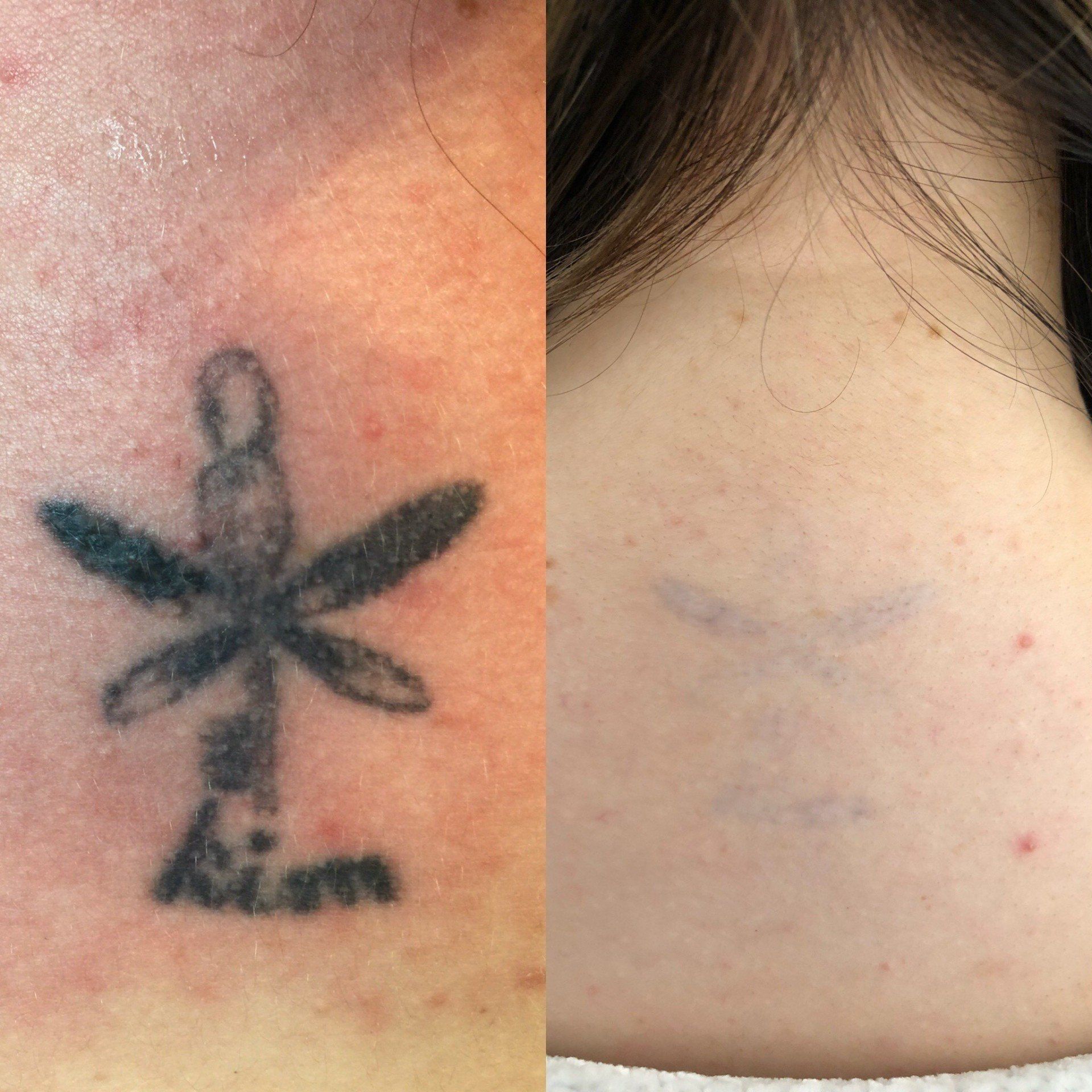A recommended clinic for laser tattoo removal in Wirral
For laser tattoo removal services in Wirral, look no further than Wirral Laser Rooms. Book an appointment today.
Safe tattoo removal at our clinic
If you want to remove a tattoo, then contact Wirral Laser Rooms. We offer laser tattoo removal services at our clinic in Moreton. Laser tattoo removal is a clinically-proven method of removing tattoos.
For more details, speak to Natalie.

All about laser tattoo removal
Why is it so difficult to remove a tattoo?
As the pigment is inserted into the lower layer of the skin, removing it becomes difficult.
How does the laser work?
We use the latest Medical Grade Q-Switched N: D YAG laser, which is one of the most effective methods for tattoo removal. A beam of light enters the tattoo ink, creating a reaction, gradually removing it.
How many sessions are required?
It depends on your body's immune system. For Indian ink amateur tattoos, it may take 3 to 5 treatment sessions and for coloured tattoos, it may take 8 to 12 treatment sessions at 8 week intervals.
How much time does it take and does it hurt?
A session can last between 5 minutes to 1 hour, depending on the size of your tattoo and can cause minor pain.
Are there any after effects?
Redness and swelling may occur. Some may even get blisters. Mild changes in skin texture may also occur.

Further information:How laser tattoo removal works
We use a Medical Grade Q-Switched N:D YAG laser, which is one of the most effective methods for tattoo removal. The Q-Switched lasers produce a high powered beam of laser light at a speed that is too fast to heat the skin, the very short pulse of light penetrates the skin without breaking it and is absorbed by the tattoo ink particles. The ink particles are then broken down into smaller pieces; your body’s immune system recognises these particles as something that shouldn’t be there and removes them naturally via the body’s own natural elimination system. Gradual fading of the tattoo occurs over a series of treatments and under normal conditions, the process which breaks down the tattoo ink begins two weeks after the laser treatment. The ink will continue to evacuate the body for approximately 4-6 weeks. For this reason, treatments are scheduled no closer than 6 weeks apart.
About the treatment
Protective eye shields are provided and the skin is cleaned. The laser is then passed over the tattoo releasing quick pulses of light, an audible clicking noise is often heard as the ink particles break down, an instant whitening or blistering of the skin is seen after the treatment, but this generally fades quickly within 15 minutes. Immediately, following the treatment an ice pack can be applied to soothe the treated area. The area may be tender for up to 48 hours, a bandage or dressing may be used to protect the area and aloe vera is applied. The location needs to be covered with sunblock when out in the sun during the healing process. Initially the tattoo is unlikely to look any different but will fade over the following 4-8 weeks as the body disperses it.
Laser tattoo removal aftercare
If you’re trying to get a tattoo cover-up, then the odds are you’re going through a tattoo removal/fading right now. Trying to cover up a tattoo without fading greatly limits what the artist can do. Undergoing a tattoo removal procedure can be taxing on your skin and the added stress that comes with it can extend your healing times. Luckily, there are a few things you can do while you are in between treatments to ensure that your healing time is kept to a minimum. People often ask what the best tattoo removal aftercare remedies are, but the word, “remedy” is a bit of a misnomer. Your body has to do all of the hard work of healing, but that doesn’t mean you can’t help it along the way. So here are a few habits you can form and use between treatments to ensure you give your body the best chance to heal in between treatments.
Tips for laser tattoo removal aftercare
The best thing is to do nothing. Rest and relaxation are on top of the list of laser tattoo removal aftercare best practices. Just as your body needs time to re-build muscle fibre after hitting a hard workout at the gym, it needs plenty of time to recuperate and rebuild healthy skin.
You don’t have to stay in bed all week, but do your best to avoid any strenuous physical activities like working out or playing sports for 24 hours immediately following your laser tattoo removal treatments. Depending on the size of the tattoo, you may want to consider taking a break from physical activities for longer. The more energy you leave your body to recover after a tattoo removal session, the more you’ll have available to help it heal.
Smaller tattoos need less downtime because the affected area is smaller. This means your body doesn’t need to work as hard as when trying to heal a larger tattoo. This doesn’t mean you get a free pass though. You should still rest in between treatments.
Potential side effects of laser tattoo removal treatment
You can expect some mild side effects after your tattoo removal treatment. Below you’ll find a list of potential side effects and what you can do to help your body heal and reduce discomfort during the 6-8 weeks between sessions. A good aftercare will include writing down the symptoms and noting down the steps taken to soothe them.
Blistering
Blistering is caused by irritation of the skin by a new tattoo, a cover up or dense ink. If you have sensitive skin and get blisters after sunburn, your skin is likely to react the same way after a laser tattoo removal treatment. Blistering looks like a bubble on the top layer of skin either within or around the tattoo. Don’t burst your blisters. They are your body’s way of protecting your skin and stopping bacteria from coming in contact with it. Popping a blister may result in infection, especially if not done properly. Blistering from laser tattoo removal lasts for about 3-5 days. If the discomfort of a blister becomes severe, let your laser tattoo clinic know or see your doctor.
Swelling
Swelling is normal after laser tattoo removal treatments. Depending on the size of the tattoo, there are a few measures you can take to manage the swelling. If your tattoo is on the upper or lower trunk, swelling will normally subside the day after the treatment. Gently ice the area intermittently for 10 minutes at a time with 5 minutes in between to help with the inflammation.
Resting will also help with larger tattoos on the torso, back and chest areas avoiding vigorous, repetitive movements. For swelling on the arms, keep the area elevated above your heart to help with circulation, which delivers everything your body needs to heal. For tattoos on the legs, it’s important to keep the feet up because gravity will pull blood down and hinder circulation. Depending on the size and location of your tattoo, swelling will subside between 3 and 5 days after a treatment.
Redness
Your skin may become red directly after treatments. This symptom can last for up to 72 hours. The colour is caused by minimal to moderate pinpoint bleeding within the skin following a treatment session. You should never see blood on your dressing, unless you are having eyebrow tattoo removal or have a popped blister. In these cases some blood may be seen, but if you start to see excessive amounts see a doctor and talk to your tattoo removal clinic. Redness of skin is sometimes accompanied by blisters. Redness in or around the tattooed area indicates that your top layer of skin is still very sensitive.
Avoid exercise that will create friction and make sure to gently pat off any sweat or water to dry the skin under your dressing. Let it dry for 20 minutes before covering it again. Some people experience redness of skin longer than others, but if the redness does not get progressively better within 7-10 days, contact your clinic or a doctor.
Itchiness
Itchiness is common, but not everyone experiences it. Itchiness can begin as soon as a few hours after a laser tattoo removal treatment and can last up to 6 weeks. If you experience severe itchiness, you can take an over-the-counter antihistamine to help alleviate some discomfort but never scratch or disturb the affected area.
Crusting, dryness, and scabbing
Crusting or dryness is a very common once the blisters have subsided and scabbing starts to form. Sometimes the affected area looks a lot worse than it is, because crusting can sometimes make the tattoo look even darker. Don’t worry – once the scabbing has healed the affected area will appear lighter. There’s not much you can do but leave the skin alone and make sure it isn’t disturbed or irritated. Never pick or remove the skin from a scab as this could cause unnecessary scarring. Crusting will last for as long as your skin needs to protect the area, so be patient with this step.
Infections
While scabbing, crusting and dryness are perfectly natural, it is important to know the difference between these normal symptoms and an infection. An infected area has increasing redness and pain, and can have pus-like discharge as well. If you have an infection, you’ll notice discharge from a deep lesion within the skin. This lesion won’t get better without medical attention. You’ll feel pain and discomfort and the redness may spread. If you suspect you have an infection, contact medical professionals immediately.
Laser tattoo removal aftercare
Laser tattoo removal aftercare is critical because it helps your body heal better and faster after each treatment. Following these recommended tattoo removal aftercare instructions can have a real impact on the outcome of your treatment. Practising proper care will help make subsequent treatments more safe and effective. However, if the area being treated hasn’t healed sufficiently between sessions, your clinic may ask you to wait longer until your next session out of concern for your safety. Your clinic and the doctor performing your treatment have the most experience in the matter. If you experience the same symptoms after each treatment, give yourself an extended period of time in between sessions to help the skin heal fully. Rushing the treatment won’t lead to a faster recovery but may actually leave you looking worse off at the end. Every individual will have a different experience and every tattoo removal is different.
Rely on us for tattoo fading and removal
We are highly experienced and use safe and proven methods for tattoo removal. We use a medical grade Q-Switched N:D YAG laser for removing tattoos. We also offer laser hair removal and carbon laser facial. If you are interested in any of our services, please contact us via telephone, email or social media as we operate on an appointment only basis.

For laser tattoo removal & tattoo fading in the Wirral, visit or call Wirral Laser Rooms on
07581 396 480

